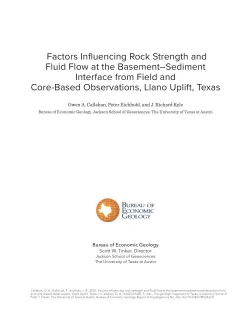
Publication Details
Get the Publication
$8.00
Abstract/Description:
The hydromechanical properties of the uppermost basement and of the basement–sediment interface influence multiple geologic processes of societal relevance, including the flow of groundwater; the accumulation of hydrocarbons, economic minerals, and geothermal resources; and the response of seismogenic faults to wastewater disposal. Lithologic, structural, and metamorphic fabric; uplift; weathering and alteration history; and the nature of the overlying strata all play roles in controlling these hydromechanical properties. To better quantify the hydrogeologic, petrophysical, and geomechanical properties of this interface, we conducted field, laboratory, and core-based investigations from sites across the Llano Uplift of Texas, where ~3,300 km2 (~1,300 mi2) of Precambrian granite, gneiss, schist, and overlying Cambrian and Cretaceous sedimentary units and weathering horizons are exposed. Outcrop and mineral exploration cores from the flanks of the uplift reveal significant variation in the nature of the Precambrian basement and Precambrian–Cambrian contact, from sharp boundaries between unaltered granite and highly permeable basal sands to fractured and altered granite with thick intervals of grus, clay-rich gravel, and preserved paleosols. On the basis of our Llano Uplift observations, we present a hydromechanical model of basement–sediment interfaces in sedimentary basins of the U.S. midcontinent as controlled by rock properties, faults and fractures, chemical alteration, and differential erosion.